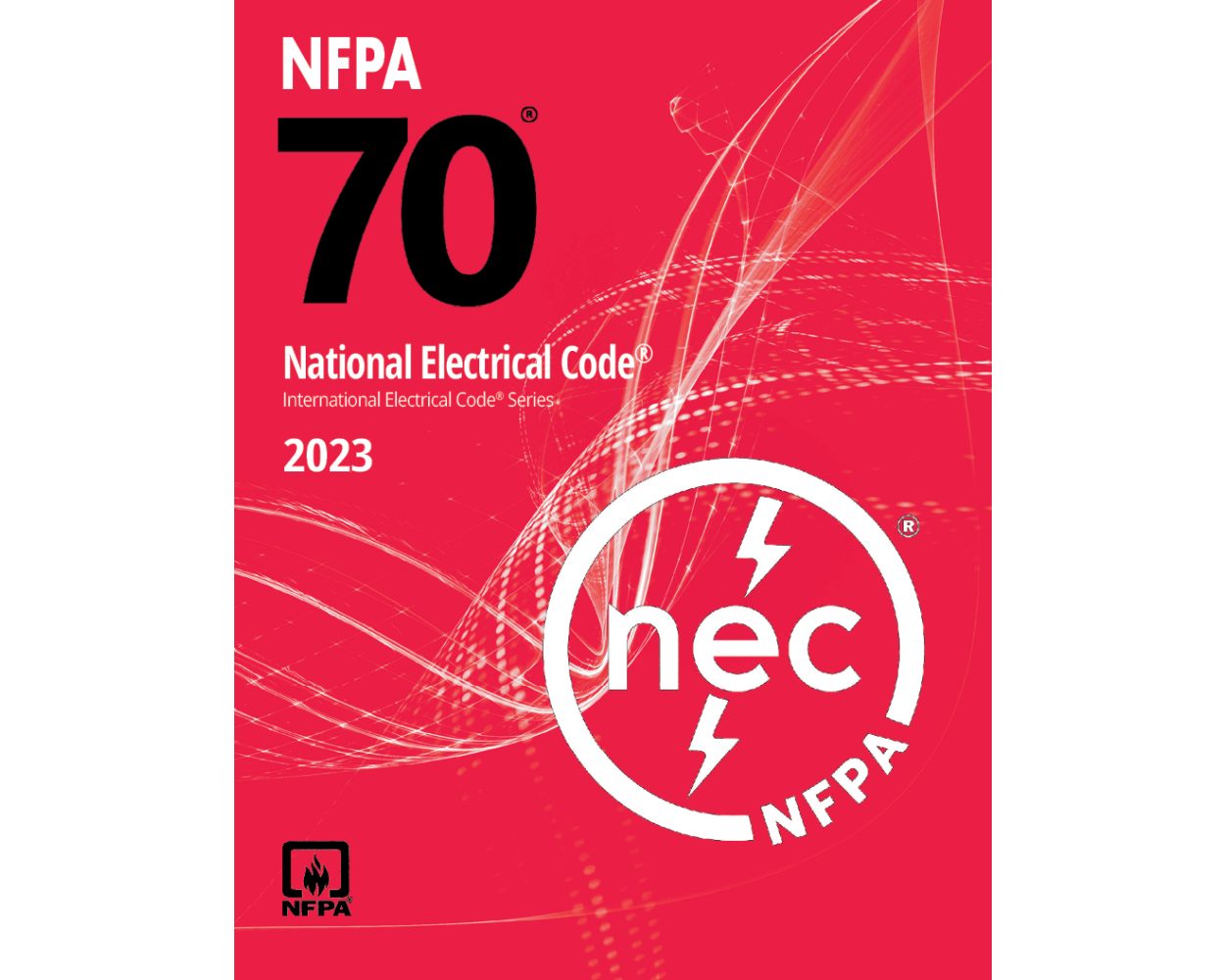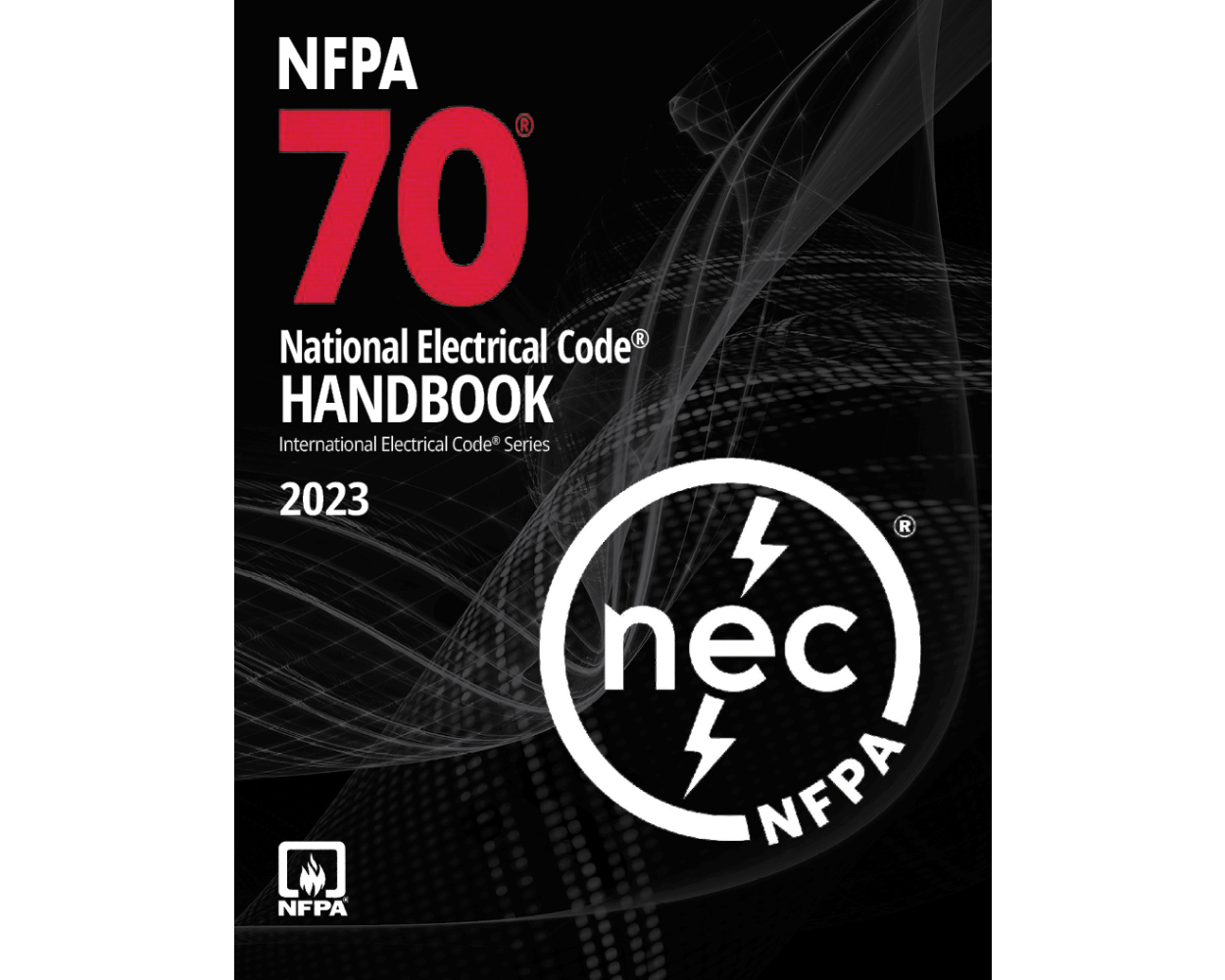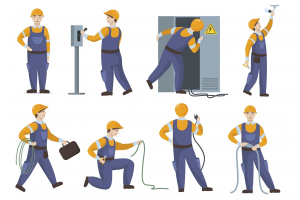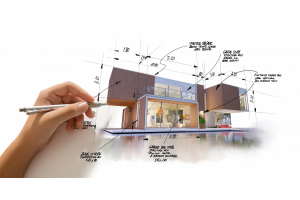NEW 2023 NATIONAL ELECTRICAL CODE (NEC)
COMING SOON!


The latest edition authoritative guideline for all electrical installations, upgrades, and repairs will be available in October of 2022.
2023 National Electrical Code Handbook is due to be available in November of 2022.
2023 National Electrical Code (NEC) now available for Pre-Order. Click here to order 2023 NEC Softcover.
2023 National Electrical Code (NEC) Handbook now available for Pre-Order.Click here to order 2023 NEC Handdbook.
The 2023 NEC has undergone substantial changes so that it more accurately accommodates the quick evolution of today's electrical hazards and requirements. The new NEC has been thoroughly modernized in terms of equipment, grounding, overcurrent protection, and wiring.
The new National Electrical Code has been updated to bring it into line with current emerging trends, development of recent technologies, and industry practices. The improved ease of use and reorganization includes an expansion of Article 100, merging all of the definitions in one place to improve ease of searching.
The 2023 NEC will assist in remaining compliant whether electrical systems above 1000V AC/1500V DC or Class 4 fault-managed circuits.
2023 NEC changes include new provisions and revised and expanded content.
Alternative energy and energy management:
- Commissioning energy storage systems (ESS)
- Delineation between storage battery systems and emergency storage systems
- Emergency management systems
- Interconnection of distributed on-site power supplies with electric utility supplies
- Load calculations for outlets supplying electric vehicle supply equipment
- Photovoltaic electric systems
- Solar photovoltaic and wind power electric systems on floating structures and in offshore locations
All electrical systems:
- Level/flat standing surfaces within the required working space for electrical equipment
- Opened electrical equipment doors that impede access to or egress from required equipment workspace
- Servicing and maintenance of equipment
- The use and approval of reconditioned equipment
Residential electrical systems
- An annex giving guidelines for using electrically powered medical equipment in homes and residential board and care occupancies
- Emergency disconnects of one- and two-family dwellings
- Ground-fault circuit interrupters (GFCI) for specific appliances
- Optional installation of receptacle outlets serving island and peninsular countertops and work surfaces
- Use of 10-ampere branch circuits
Commercial/industrial electrical systems including:
- Arc-fault circuit interrupter (AFCI) protection of sleeping areas of public safety and first responder facilities
- Disconnecting means in sight of luminaires using double-ended lamps to include LED type
- GFCI for specific appliances
- Use of "replacement panelboards"
- And more
New articles:
As of January of 2022, the following twelve new articles were proposed for the 2023 National Electrical Code (NEC)
- Article 231: Electric Power Sources Interconnected with an Electric Utility - This new article is to acknowledges that alternative energy systems and electric power utilities will operate in parallel and will be connected and will interface with the existing service equipment.
This article will work along with Article 230: Services.
- Article 245: Overcurrent Protection for Systems Rated Over 1000 Volts AC, 1500 Volts DC - Circuits and electrical equipment permanently installed on premises wiring over 1000V AC or 1500V DC nominal need new requirements for overcurrent protection.
- Article 305: Requirements for Wiring Methods and Materials for Systems Rated Over 1000 Volts AC, 1500 Volts DC, Nominal - Information on medium voltage (MV) installations is to be organized in a separate article to give electrical inspectors and the industry as a whole extra assistance.
- Article 315: Medium Voltage Conductors, Cables, Cable Joints, and Cable Terminations - This will actually be a revision of Article 311, which was new for the 2020 NEC.
This article will add requirements for medium voltage (MV) cable connectors, cable joints, and terminations so that MV cables and conductors have complete system installations.
- Article 335: Instrumentation Tray Cable: Type ITC - This will change and move Article 727 to Article 335 and will cover the construction specifications, installation, and use of instrumentation tray cable (Type ITC).
This will apply to control circuits of up to 5 amperes and operating at no more than 150 volts.
- Article 369: Insulated Bus Pipe: (IBP)/Tubular Covered Conductors (TCC) - This will cover the installation of tubular covered conductor (TCC), also known as insulated bus pipe (IBP).
Requirements published in UL 1366 (Outline of Investigation for Insulated Bus Pipe) may allow IBP to achieve UL listing under the category of CVZL.
This article will make it necessary for IBP to comply with manufacturer's instructions for listing, and then installation, support, termination and testing by persons who are qualified for such activities.
- Article 371: Flexible Bus Systems - This article will cover the installation requirements and use of flexible bus systems and the fittings related to them.
Flexible bus systems have been engineered for specific site locations and are usually put together at the installation site from parts specified or provided by the manufacturer.
These include flexible insulated bus as well as the related fittings to offer both support and termination of the bus.
- Article 395: Outdoor Overhead Conductors over 1000 Volts - This was previously Article 399, with the same name, which has been suggested for deletion and the content being moved to Article 395.
This move is suggested to provide increased focus on medium or high voltage requirements and improve usefulness.
- Article 512 Cannabis Oil Equipment and Cannabis Oil Systems Using Flammable Materials - This is to address issues with both commercial and industrial cannabis oil preparation facilities.
This will address booths, extraction equipment, post-processing equipment, and systems that use flammable materials (combustible liquid-produced vapor, flammable gas, flammable liquid-produced vapor, etc.)
- Article 722 Cables for Power-Limited Circuits - This will combine requirements for cabling that are common to Article 725 (Class 1, Class 2, and Class 3 Remote-Control, Signaling, and Power-Limited Circuits), Article 760 (Fire Alarm Systems), and Article 770 (Optical Fiber Cables) in the 2020 NEC, and will move other requirements for cabling into a single article.
This will cover the installation requirements for single- and multiple-conductor cables used in Class 2 and 3 limited power circuits, optical fiber installation, and PLFA (power-limited fire alarm) circuits.
Parts I and V of the article will give general cable requirements for power-limited cables and circuit conductors.
Part II, will address other requirements for cable that are specific to Class 2 and 3 circuits.
Part III will cover extra fire alarm specific cable requirements.
Part IV will address optical fiber cable specific requirements.
- Article 724: Class 1 Circuits - This is to address Class 1 circuits that are not integrated into utilization equipment or devices.
At this time, Class I circuits are grouped in Article 725 (Class 1, Class 2, and Class 3 Remote-Control, Signaling, and Power-Limited Circuits) along with Class 2 and 3 circuits.
This new article will cover Class 1 circuits, not currently recognized by the IT industry as being power-limited and therefore should not be grouped with Class 2 and 3 circuits.
Remote-control and signaling Class 1 circuits are addressed in the first four chapters of the NEC, and therefore are proposed to be eliminated from Article 725, as there are no special conditions related to these circuits.
Unless specifically mentioned in this new article, installation requirements for Class1 remote-control and signaling circuits are not reliant on the equipment that they supply.
- Article 726: Class 4 (CL4) Power Systems - This article is due to Class 4 systems differing from Class 2 or 3 power-limited circuits.
Class 4 systems limit the energy and power available into a fault condition, including arcing, human contact, and resistive faults instead of limiting the output of the power source.
Class 4 systems have also been called Digital Electricity (DE), Fault Managed Power (FMP), Packet Energy Transfer (PET), Pulsed Power, and Smart Transfer Systems, among other things.
2023 National Electrical Code (NEC) now available for Pre-Order.
https://www.buildersbook.com/nfpa-70-national-electrical-code-nec-softbound-2023-edition.html
2023 National Electrical Code (NEC) Handbook now available for Pre-Order.
https://www.buildersbook.com/nfpa-70-national-electrical-code-nec-handbook-2023-edition.html


